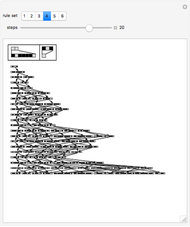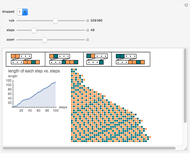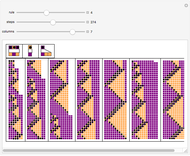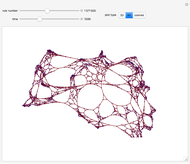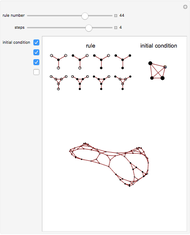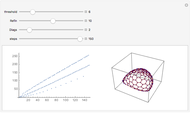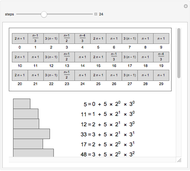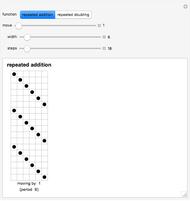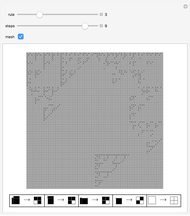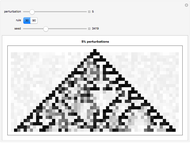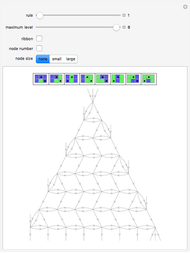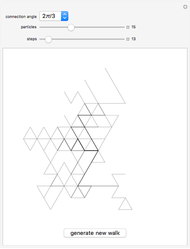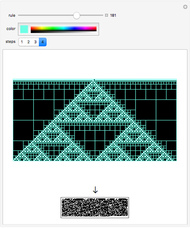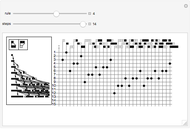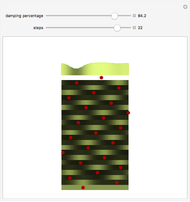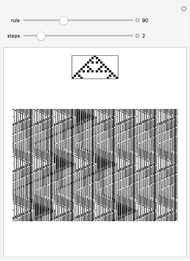Two Types of Network Systems

Requires a Wolfram Notebook System
Interact on desktop, mobile and cloud with the free Wolfram Player or other Wolfram Language products.
The initial state of a network system consists of a network with two connections per node, an "above" connection (shown with a directed arc above the connected nodes) and a "below" connection (shown with an arc below the connected nodes in the opposite direction). Network systems then evolve based on rules that specify how the "above" and "below" connections should be rerouted. [NKS, p. 199]
[more]
Contributed by: Abigail Nussey (March 2011)
Open content licensed under CC BY-NC-SA
Snapshots
Details
Each node is denoted by a pair  , where
, where  is the node reached by traveling the "above" connection and
is the node reached by traveling the "above" connection and  is the node reached by traveling the "below" connection. So, for instance, a cyclic network of five nodes can be denoted by the array
is the node reached by traveling the "below" connection. So, for instance, a cyclic network of five nodes can be denoted by the array  .
.
The rules describe how each "above" and "below" connection should be rerouted on the next step. 1 denotes an "above" connection, and 2 denotes a "below" connection.
So the rule  for the simple network system means to rewire the "above" connection of each node by first traveling the existing "above" connection and then the next "below" connection, with the resulting node reached being the new "above" connection for the next step of the evolution of the node; the "below" connection is rewired by traveling the existing "below" connection and then using the resulting node as the new "below" connection for the next step in the evolution of the node—in other words, it keeps the "below" connection the same.
for the simple network system means to rewire the "above" connection of each node by first traveling the existing "above" connection and then the next "below" connection, with the resulting node reached being the new "above" connection for the next step of the evolution of the node; the "below" connection is rewired by traveling the existing "below" connection and then using the resulting node as the new "below" connection for the next step in the evolution of the node—in other words, it keeps the "below" connection the same.
For node-creating network systems, we allow the creation of up to two new nodes for every connection between old nodes. So an example of a rule for this system is  , which says to create two new nodes to be placed in the "above" connection of each node, such that the "above" connections of the new nodes behave the same way at the old "above" connection (like connecting subsequent nodes, for instance), and the "below" connections for the new nodes behave the same way as the old "below" connections. The "below" connections for old nodes stay the same, according to this rule.
, which says to create two new nodes to be placed in the "above" connection of each node, such that the "above" connections of the new nodes behave the same way at the old "above" connection (like connecting subsequent nodes, for instance), and the "below" connections for the new nodes behave the same way as the old "below" connections. The "below" connections for old nodes stay the same, according to this rule.
Permanent Citation









